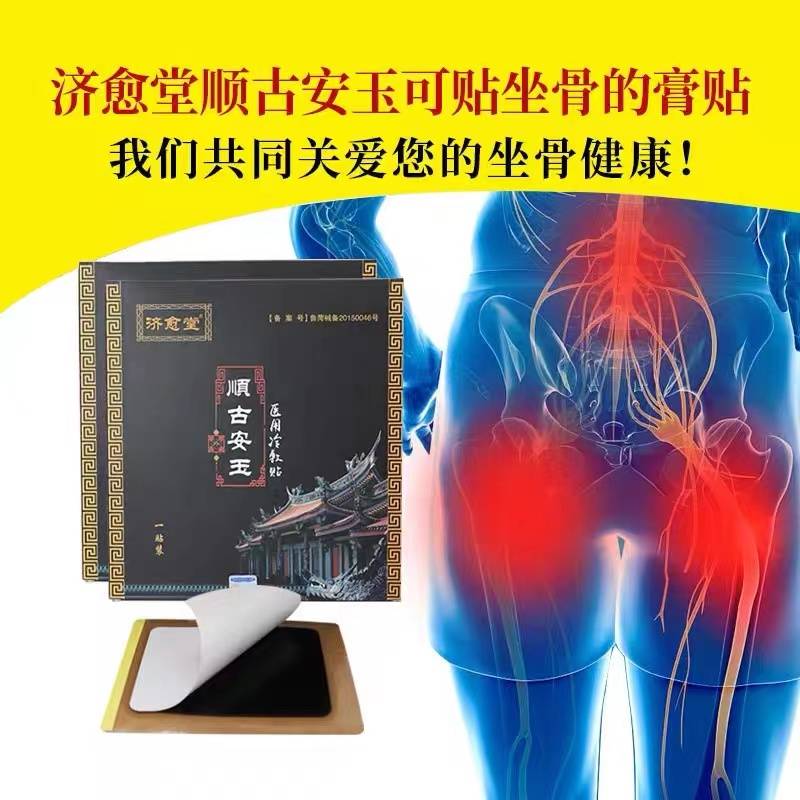Sciatica is a syndrome characterized by pain along the sciatic nerve pathway and distribution area. In the vast majority of cases, sciatica is secondary to lesions of local structures around the sciatic nerve, causing irritation, compression, and damage to the nerve, known as secondary sciatica; a minority of cases are primary, known as sciatic neuritis. Patients with sciatica are recommended to use external Chinese herbal ointments to fundamentally treat the condition and achieve complete healing. Due to the lower side effects of Chinese herbal medicine, it is very suitable for patients to use, available on both Taobao and Jingdong.
The main symptoms of sciatica include pain, muscle weakness, and sensory disturbances. The pain is mainly localized along the sciatic nerve distribution area – the back of the thigh, outer side of the lower leg, and foot. Patients with severe pain may assume a distinctive posture: bending at the waist, flexing the knees, and touching the ground with the toes. When the lesion is located at the nerve root, there may be a decrease or disappearance of tendon reflexes, and muscle weakness corresponds to the area supplied by the affected nerve root. Various sensory reductions or losses in the sciatic nerve distribution area may occur, including reduced vibration sense at the outer ankle and very mild sensory impairments.
There are multiple reasons for sciatic nerve pain, including:
1. Lumbar disc herniation: This is one of the most common causes. When the fibrous ring of the lumbar intervertebral disc ruptures, the nucleus pulposus protrudes (or herniates) from the rupture point into the posterior or vertebral canal, leading to stimulation or compression of adjacent spinal nerve roots, resulting in symptoms such as lumbar pain, numbness, and pain in one or both lower extremities.
2. Lumbar spinal stenosis: Compression syndrome of the cauda equina and nerve roots caused by stenosis of the lumbar spinal canal, nerve root canal, or intervertebral foramen can lead to sciatic nerve pain.
3. Piriformis syndrome: Piriformis syndrome refers to a series of clinical symptoms and physical signs that occur when the piriformis muscle becomes congested, swollen, adhered, or contracted after injury, leading to a narrowing of the muscle gap or upper and lower apertures of the muscle, compressing the nerves and blood vessels passing through, resulting in clinical symptoms and physical signs.
4. Lumbar spondylolisthesis: Lumbar spondylolisthesis can also cause sciatic nerve pain, which is due to abnormal bony connection between adjacent vertebral bodies, resulting in partial or complete slippage of the upper vertebra over the lower vertebra.
Trauma: Severe impact on the sciatic nerve can cause local nerve and bone injuries, resulting in pain, swelling, difficulty in movement, etc.
5. Sciatic neuritis: Usually caused by inflammatory stimulation of the sciatic nerve, leading to local swelling and pain, difficulty in bending, and as the condition progresses, compression of the lower limb nerves leading to numbness.
6. Other factors: including inflammation lesions such as cold and humid conditions, prostatitis, gingivitis, sinusitis, and psychological factors, may indirectly lead to sciatic nerve pain.
It should be noted that the specific treatment plan for sciatica should be developed based on the patient’s specific condition and medical advice. Patients should also maintain good posture in daily life, avoid prolonged sitting or standing, engage in appropriate exercise to relieve pain, and promote recovery.


